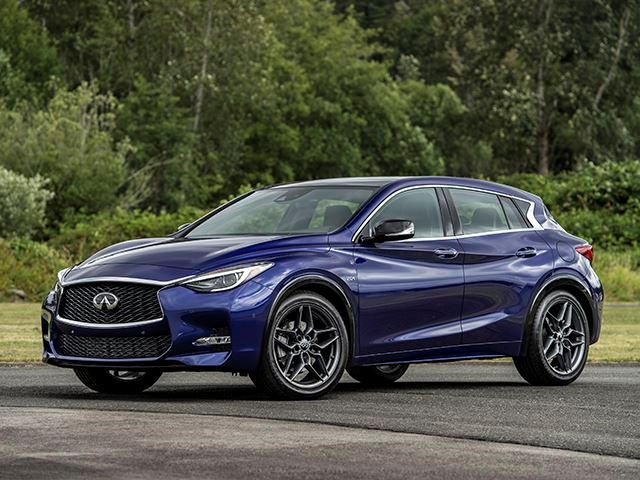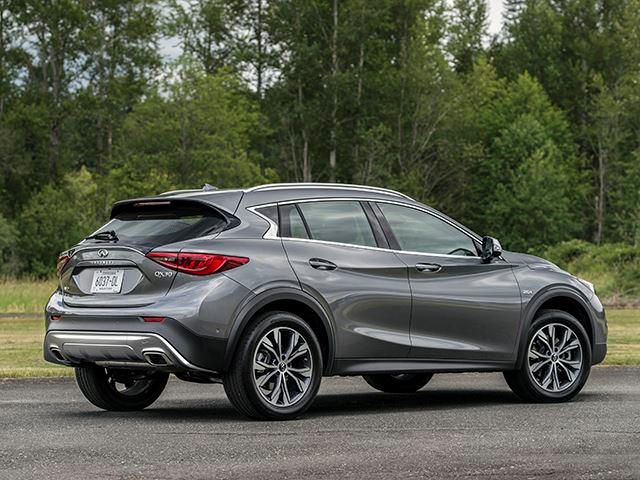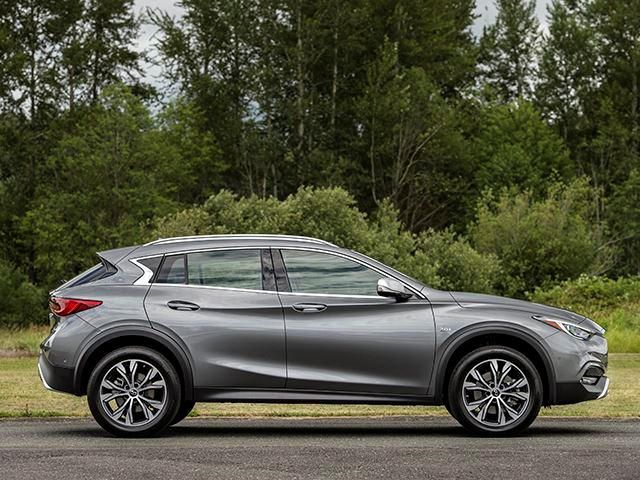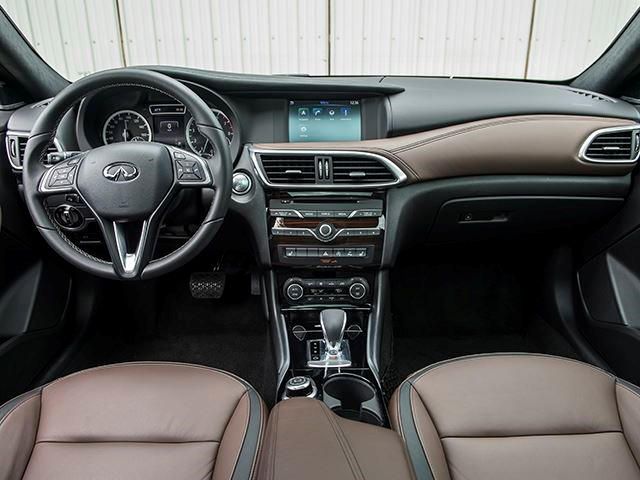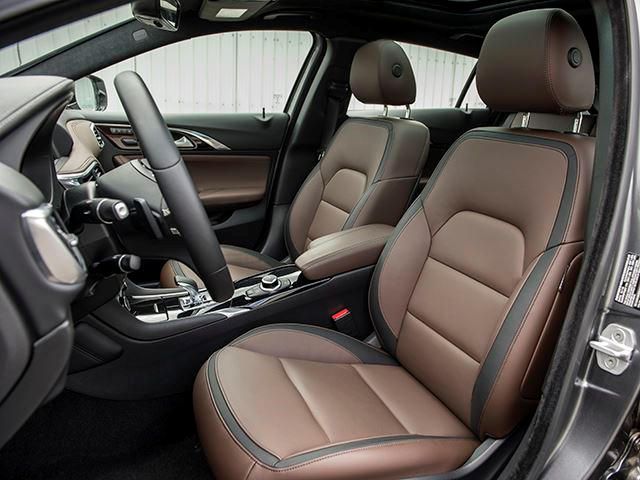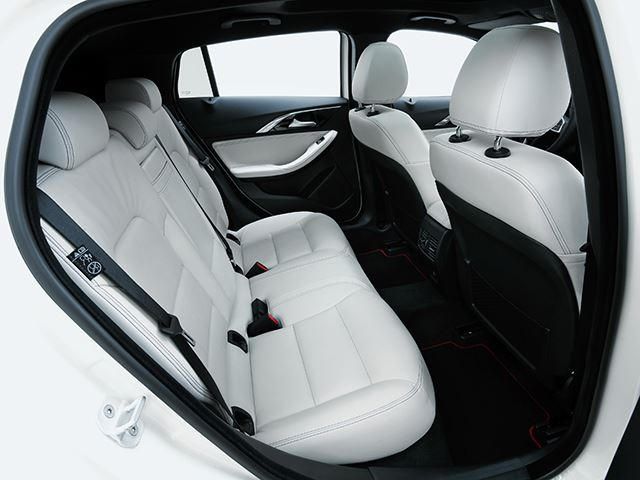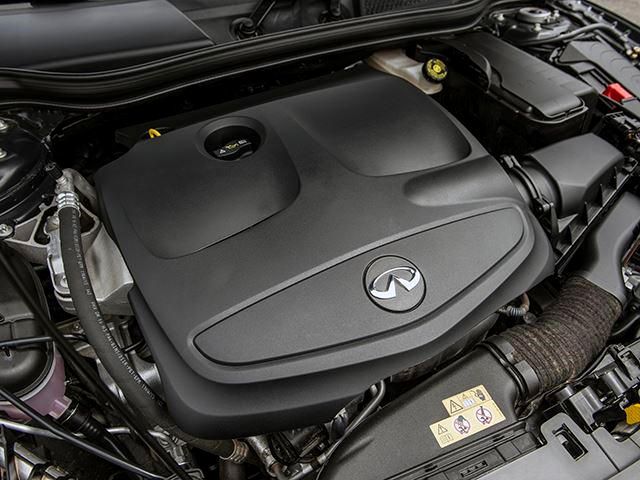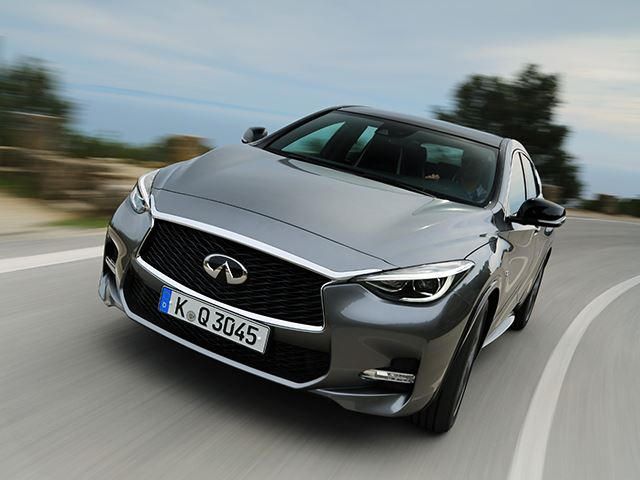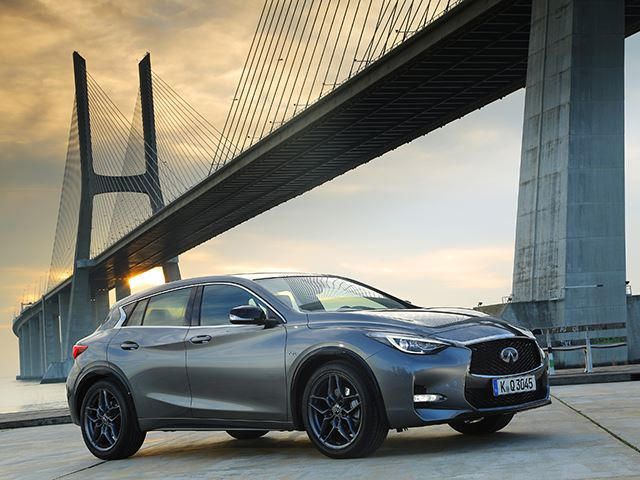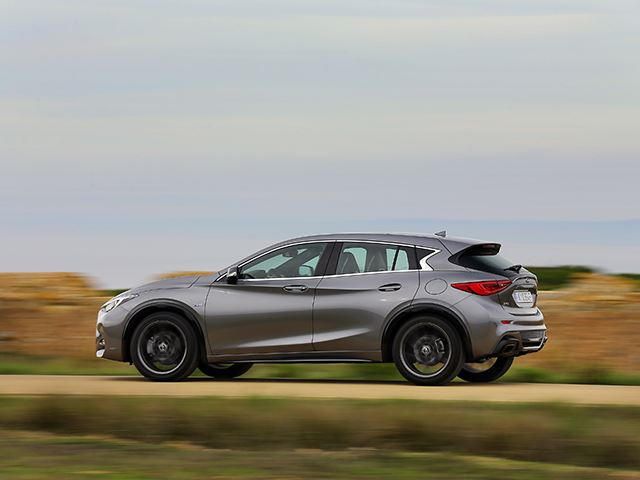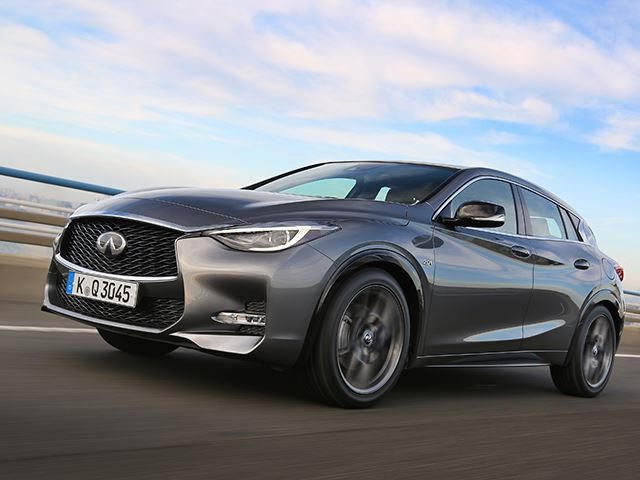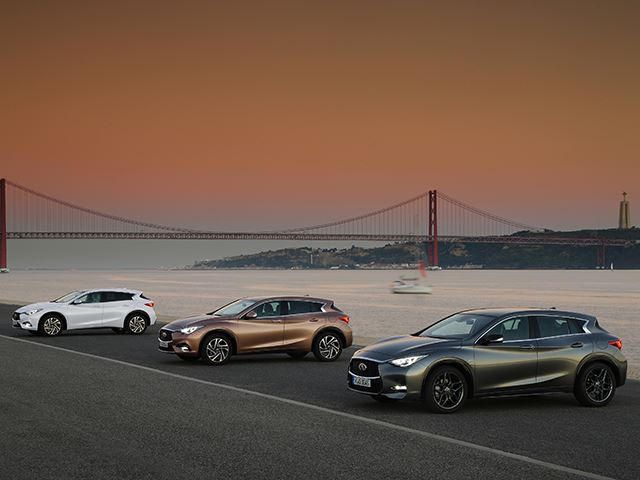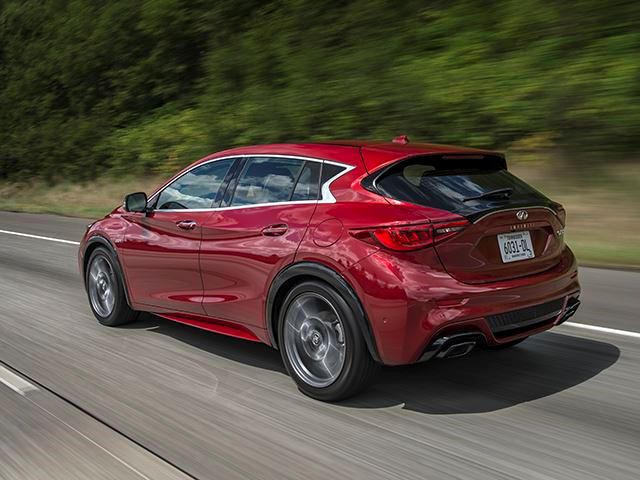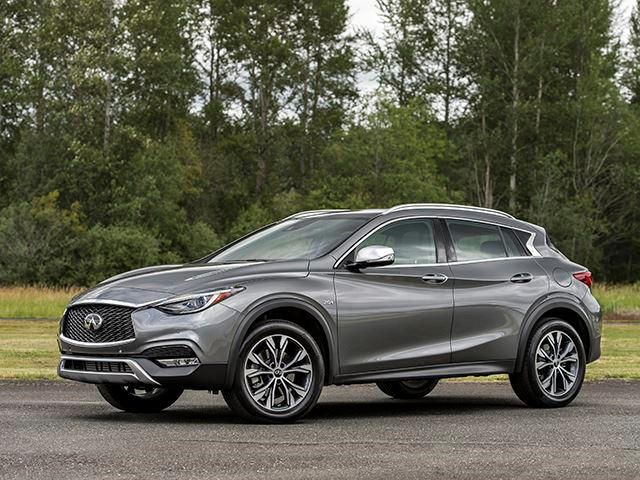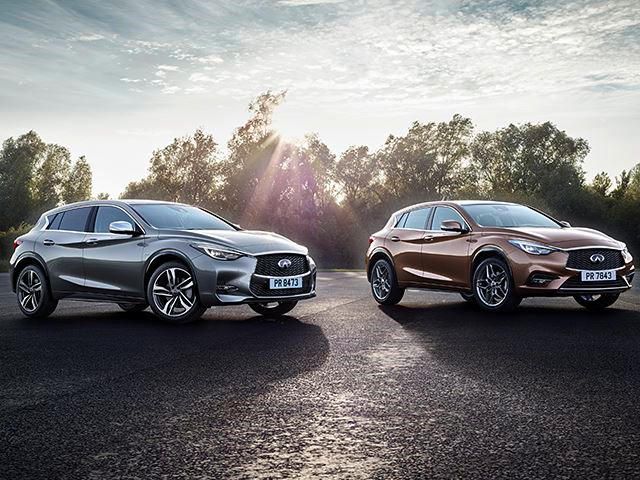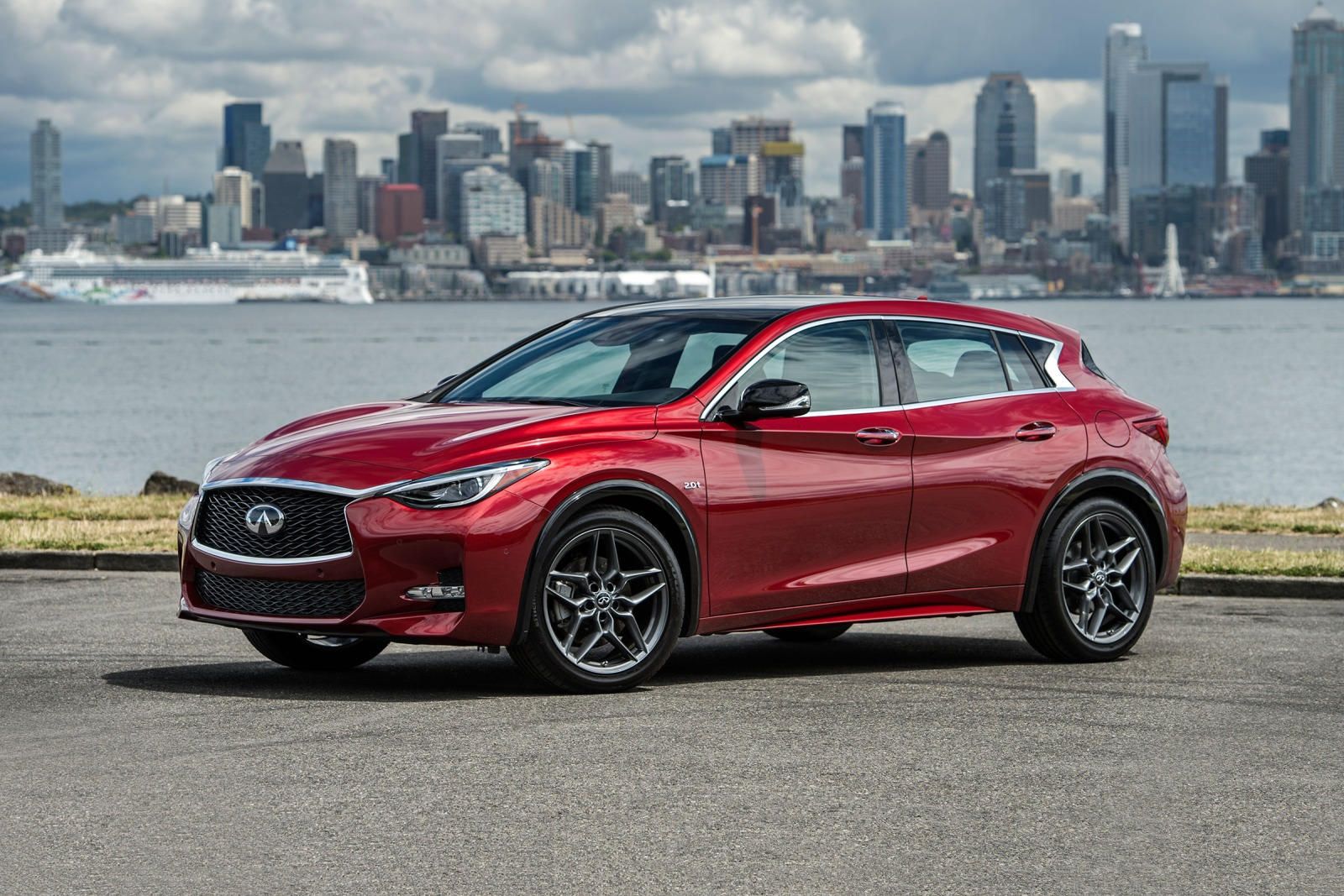
It wasn't until the mid 1900s that designers began to phase out the tall coach-like styling seen on cars such as the Ford Model T and Buick Series 20 in favor of the low sleek lines introduced during the streamlining era. The trade off sacrificed the ease of entrance for a lower roofline, better handling, improved aerodynamics, and an aesthetically palatable profile. Then, clocks begun to spin backwards as gas prices slipped and buyers sought SUV utility without the penalty of parking lot adverse dimensions.
It's shifts like these that are reflected on the inclined trend line of crossover sales and make pulling the trigger on an entry-level luxury crossover a no brainer for Infiniti. With sales of the C-Segment crossover predicted to double in the next three years, the industry is in the middle of a race to see who can lull in the majority of these buyers and come out ahead. This is just the break that Nissan's luxury segment needs to take advantage of if it wants to solidify itself among the ranks of Lexus and Mercedes. You know what they say, if you can't beat em', join em', and with Infiniti's 215,250 sales in 2015 looking pitiful next to the 1.87 million cars Mercedes sold during the same year, the choice was obvious.
In 2011, Nissan was married to Mercedes' parent company Daimler, and thus the platform sharing began. Taking the bones of the Mercedes GLA and giving it the look of a Mazda3 was all it took for the Infiniti QX30 to make it to market. Based off of the Etherea concept seen at the 2011 Geneva Auto Show, the QX30 is really just a cleverly disguised wagon that got dubbed a crossover to get Americans to pay attention. Despite fishing for buyers in the US following a 14% spike in sales during 2015, Infiniti is aiming this car straight at Europe, the brand's current region of focus. To expedite deliveries, the QX30 will be built in Sunderland, England, which was a decision made prior to the passing of the infamous in-out referendum that threatens the UK car industry.
When the first boatload arrives to the States in late August, three different flavors of QX30 will emerge from the cargo hold. The most basic will be the QX30 FWD followed by the QX30 Sport (which also has its front wheels driven) and finally, the QX30 AWD, the latter of which Infiniti expects to be the favorite among US buyers. All three will feature the same 2.0-liter turbocharged four-cylinder engine with stop/start technology seen in the Mercedes GLA, where it continues to make 208 horsepower and 258 lb-ft of torque. Infiniti then coupled that to the GLA's seven-speed dual clutch automatic and added paddle shifters to appease engaged drivers, none of which stop the dual-clutch unit from exhibiting lurchy behavior at low speed cruising.
Despite sharing a powertrain, Infiniti's senior manager Sean McNamara was insistent that the throttle response has gotten the Japanese automakers personal touch. For people who take pride in being able to identify cars without looking at a badge, pay attention to the ride height in order to distinguish which of the three Mazada3 lookalikes you're staring at. The QX30 FWD sports a 6.7-inch ride height while the AWD version gains an additional 1.2 inches to compliment its unique 18-inch wheels, front and rear fascia, roof racks, and rugged-looking overfenders. Helping the AWD model remain competent when the pavement runs out is a front-biased AWD system that sends up to 50% of power to the rear when it detects slip.
The hardware has been dialed up to help as well with the rear roll bar gaining 85 percent of additional stiffness, a spring rate that is 3 percent stiffer than on the standard model, and a larger steering ratio. Opting for the Sport model drops the ride height by 0.6 inches from the QX30 FWD, adds "sport-tuned" steering, and cranks up spring stiffness by 7 percent over the base QX30 FWD. We didn't have the chance to take the QX30 FWD on a spin, but the difference in driving characteristics between the QX30 AWD and QX30 Sport are as drastic as you'd expect. Both feel precise and German, but the Sport model takes corners with a higher degree of enthusiasm than the AWD variant as one would expect.
Three driving modes, Eco, Sport, and Manual are at your service to tailor to various driving tastes but the sluggishness of the Eco setting and Manual mode's impracticality render Sport the selection of choice for most drivers. As a car intended for customers who are new to premium brands, the QX30 must do its part to introduce them to luxury. While the crescent-cut C-pillar compliments the rest of the exterior of the car to make it undeniably Infiniti, the interior is another story. Those who have climbed into a Mercedes or two will recognize plenty of interior components, although the Spinal Support Seats are a product of an Infiniti employee's design, and distribute body pressure to reduce long-distance driving fatigue.
These can be had covered in Nappa leather for a premium or in leatherette surfaces to keep things on the cheap, but all are colored to the whims of the chosen interior design theme. The QX30 FWD has an available Gallery White Theme that transforms the standard interior by adding white Nappa leather, a black Dinamica headliner, red contrast stitching, and satin silver mirror caps. The talked-up Cafe Teak Theme splashes the interior of the QX30 AWD with brown Nappa leather, the Dinamica interior, genuine wood inserts, and the same silver mirror caps. The QX30 Sport only has a leather package that exchanges the leatherette sports seats with Nappa leather to compliment the flat-bottom steering wheel and aluminum paddle shifters.
However, as seasoned luxury buyers know well, quality materials can't be relied upon alone to hold up the show of luxury. Electronic aids help in this area because ex-Honda Accord owners now have forward emergency braking, high-beam assist, blind spot warning, intelligent cruise control, lane departure warning, 360-degree cameras, parking sensors, and moving object detection to look forward to. Although pricing has yet to be finalized, buyers can expect to pay around $30,900 (once destination charges are tacked on) for a standard QX30 FWD spec. For that, Infiniti throws in dual-zone climate control, a six-speaker audio system, power-folding exterior heated mirrors, LED running lamps, and a rear view monitor.
Step it up a notch to the $39,450 QX30 Sport and suddenly a 10-speaker Bose system finds its way inside, as do 19-inch wheels and cross-drilled front rotors. Opt for the most expensive model, the $45,450 fully loaded QX30 AWD, and you get heated seats, foot well lamps, rain-sensing wipers, and heated washers. Ultimately, the bevy of packages does little to hide some of the QX30's cheap areas. Luxury car or not, the cramped interior does little to signify that the wagon, err, crossover is bested by the Mercedes GLA and BMW X1 when it comes to interior space and surpasses the Audi Q3 and its German counterparts in cargo volume. Claustrophobic feelings only relent when the sunshade on the panoramic moonroof is retracted.
Luckily our Seattle-based QX30 test drive took place during sunny days, allowing the panoramic roof to put a blue sky on display to help us soak up a few hundred miles of Washington road. Mixing city driving in staunch Seattle traffic with open road cruising, we managed a 26 miles per gallon. While the EPA has yet to slap ratings stickers on the QX30, an Infiniti spokesperson did say that they expect a rating of over 30 mpg highway, which sounds believable given the mileage we averaged. With the radical looks and pricing to compete in a niche but growing segment, the QX30 may end up being just what the brand needs to march its way into Europe while snagging a few extra American loyalists.
As the success stories of the Mercedes GLA and Lexus NX have shown, there is a market for small vehicles that do it all; family utility, spirited driving, respectable gas mileage, edgy looks, and mild luxury. However, as a jack-of-all-trades, the QX30 falls short by trying hard to play many roles yet excelling at none. If Infiniti gets things right and starts off a sales frenzy, it may be onto a new tactic that would allow for the homogenization of wagons and crossovers by introducing radicalized styling and varying ride height until both Americans and Europeans are buying what is essentially the same car. We won't know until the first shipments make their way to the US, but what we know for now is that Infiniti has left us with a good-looking wagon alternative.

